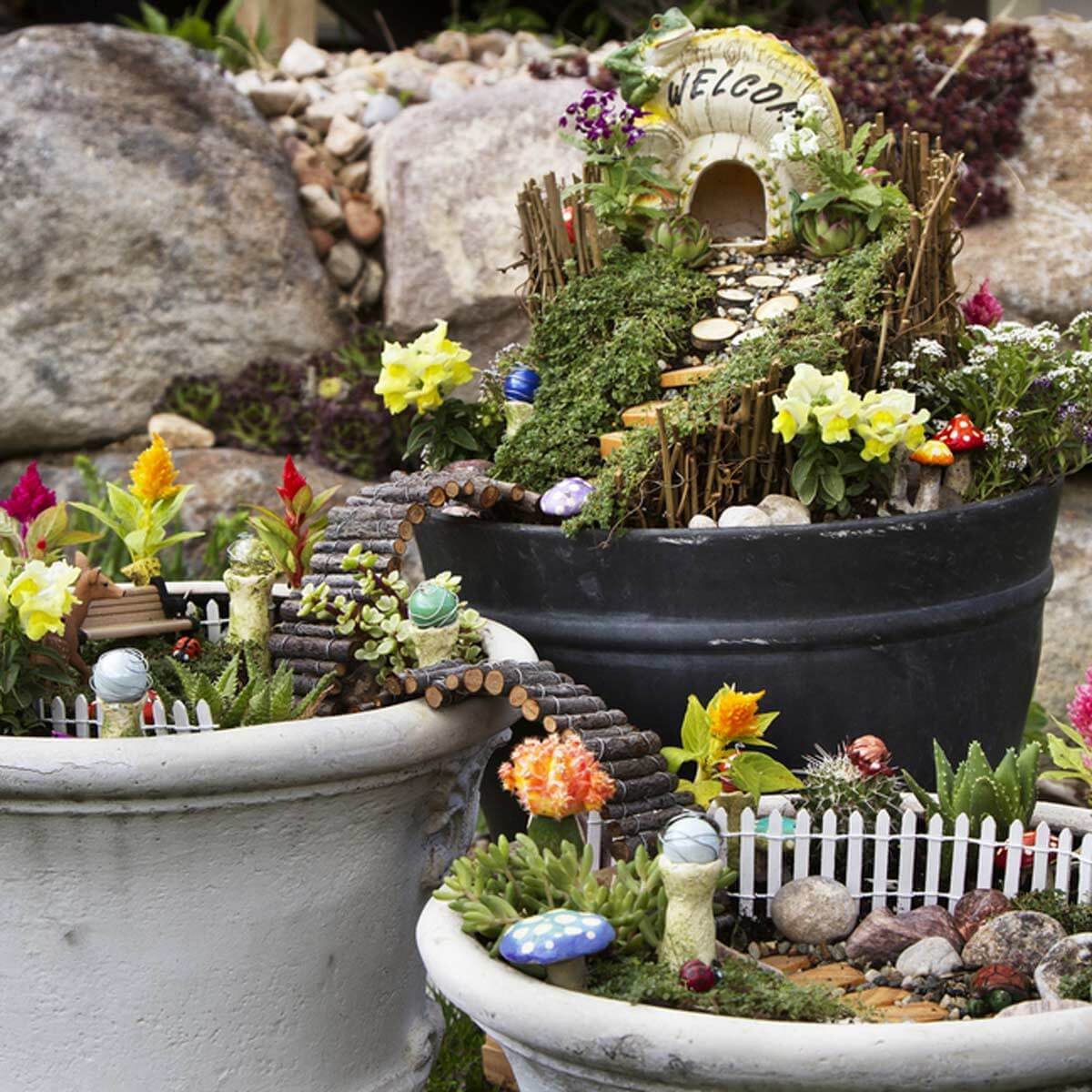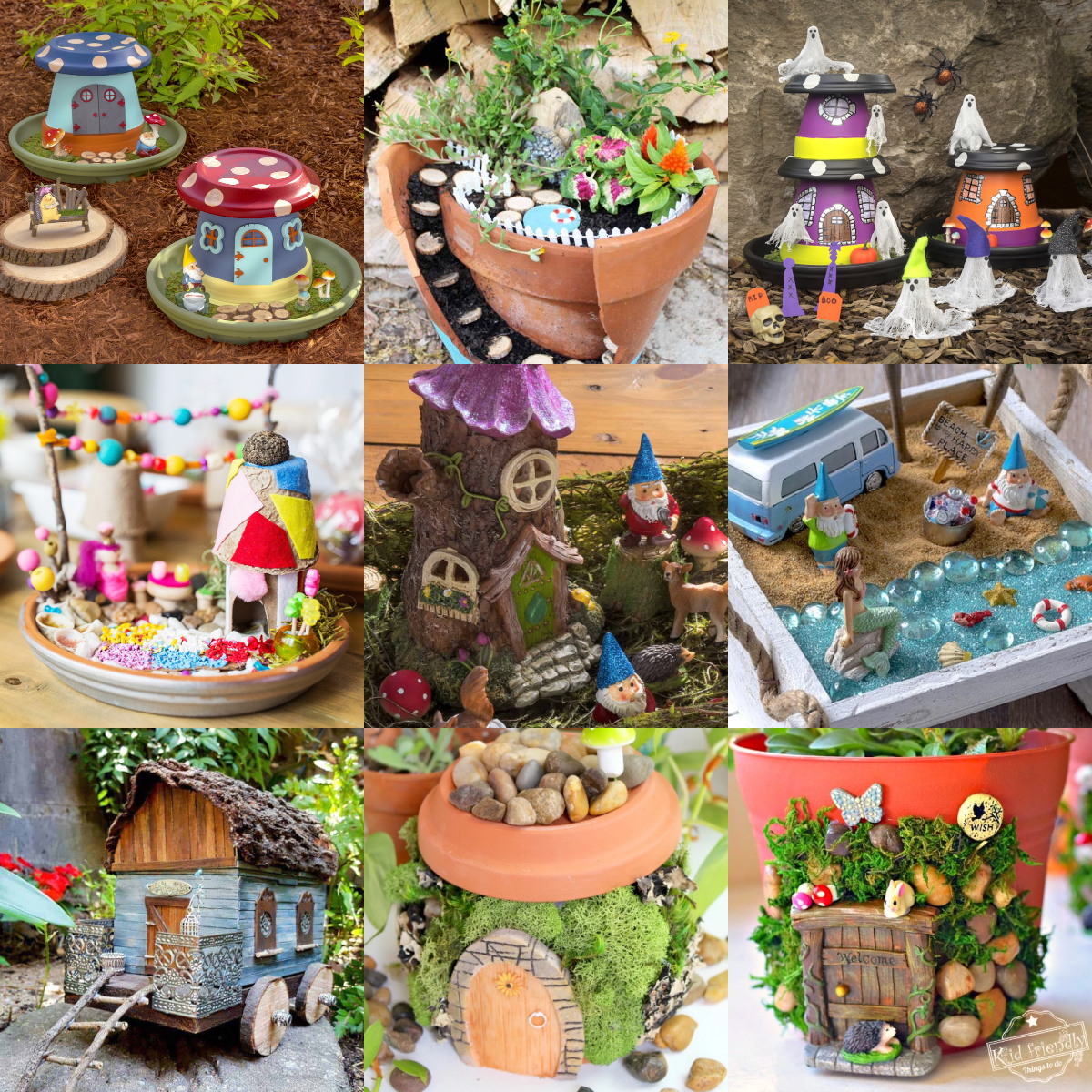DIY fairy garden sets the stage for this enthralling narrative, offering readers a glimpse into a world of miniature wonder. Imagine stepping into a realm where tiny houses, whimsical pathways, and delicate flowers create a captivating scene.
Fairy gardens are miniature ecosystems designed to mimic the beauty and magic of nature, often featuring tiny houses, furniture, pathways, and figurines. These enchanting creations offer a delightful escape into a world of imagination and creativity, inviting you to create a miniature haven for fairies and other mythical creatures.
Introduction to Fairy Gardens: Diy Fairy Garden

Fairy gardens are miniature worlds, often created in containers, that capture the magic and wonder of nature, scaled down to a charming and whimsical size. These enchanting gardens are designed to resemble the mythical homes of fairies, complete with miniature houses, furniture, and tiny pathways winding through lush, miniature landscapes.
The allure of fairy gardens lies in their ability to spark imagination and creativity. They offer a delightful escape from the everyday, allowing individuals of all ages to tap into their inner child and create their own miniature worlds. The intricate details, the playful use of miniature objects, and the sense of wonder that these gardens evoke make them a popular hobby for people seeking a relaxing and imaginative outlet.
Origins and History of Fairy Gardens
The concept of fairy gardens has been around for centuries, rooted in folklore and mythology. Fairy gardens, in their modern form, gained popularity in the early 20th century, coinciding with the rise of miniature gardening and the growing interest in creating miniature landscapes. These gardens, often created in containers like teacups or old watering cans, were initially inspired by the whimsical depictions of fairyland found in children’s literature and illustrations.
- Early 20th Century: Fairy gardens emerged as a popular hobby, particularly in the United States, where miniature gardening was gaining traction. Gardeners started incorporating miniature houses, furniture, and pathways into their miniature landscapes, creating enchanting and whimsical settings for fairies.
- Mid-20th Century: The popularity of fairy gardens continued to grow, fueled by the rise of the “miniature craze” and the increasing availability of miniature gardening supplies. Fairy gardens became a common sight in homes and gardens, with people creating elaborate and imaginative miniature worlds.
- Late 20th and 21st Century: The advent of the internet and social media has further popularized fairy gardens, with online communities and websites dedicated to sharing ideas, techniques, and inspiration. Today, fairy gardens are enjoyed by people of all ages and backgrounds, offering a creative outlet and a sense of wonder.
Selecting Plants for Your Fairy Garden
Choosing the right plants is essential for creating a thriving and enchanting fairy garden. Miniature plants, with their delicate features and captivating charm, are perfect for these miniature worlds. Let’s explore some plant options, tips for selection, and ways to attract beneficial insects to your fairy garden.
Miniature Plants for Fairy Gardens
The miniature world of fairy gardens is best suited to plants that remain small and compact. These plants, often referred to as “dwarf” or “miniature” varieties, offer a range of textures, colors, and shapes to enhance your garden’s charm.
- Herbs: Thyme, rosemary, and oregano are not only visually appealing but also offer fragrant scents. Dwarf varieties, like “Elfin” thyme and “Pink Cascade” rosemary, are ideal for fairy gardens.
- Succulents: Succulents are excellent choices due to their low-maintenance nature and diverse shapes. Consider varieties like “Sedum” and “Echeveria” for their captivating colors and textures.
- Groundcovers: These plants create a lush carpet beneath taller plants. “Creeping Jenny” with its vibrant green foliage and “Baby Tears” with its tiny, delicate leaves, add a touch of elegance.
Choosing Plants Based on Size, Color, and Growth Habits
Consider the following factors when selecting plants for your fairy garden.
- Size: Choose plants that remain small and compact, ideally less than 6 inches tall. This ensures they won’t overwhelm the miniature setting.
- Color: Plants with contrasting colors, such as vibrant blooms against green foliage, create visual interest. Experiment with shades of purple, pink, yellow, and white to create a colorful haven.
- Growth Habits: Select plants with spreading or cascading growth patterns. These varieties create a natural and whimsical feel in your fairy garden.
Plants that Attract Pollinators and Beneficial Insects, Diy fairy garden
Attracting pollinators and beneficial insects to your fairy garden not only adds to its natural beauty but also helps control pests.
- Lavender: This fragrant herb attracts bees, butterflies, and other pollinators with its purple blooms.
- Yarrow: This plant attracts ladybugs, which are beneficial insects that help control aphids and other pests.
- Cosmos: Cosmos flowers are a magnet for butterflies and other pollinators, adding vibrant color and life to your fairy garden.
Last Recap

As you embark on your fairy garden journey, remember that the possibilities are endless. Let your imagination soar, experiment with different themes, and create a miniature world that reflects your unique style and personality. The magic of fairy gardens lies in their ability to spark joy, inspire creativity, and connect us with the wonder of the natural world.
A DIY fairy garden is a wonderful way to bring a touch of magic to your home. You can create a miniature world with tiny houses, whimsical plants, and charming details. To add an extra element of intrigue, you could even use a spybot to keep an eye on your miniature inhabitants and capture their secret activities.
After all, even fairy gardens have their own mysteries to uncover!




